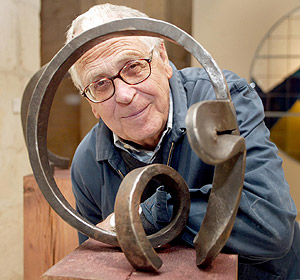
La Fundación Martín Chirino pone en venta una de sus obras. La información de este artículo ha sido tomada de la Fundación.
El Castillo de La Luz como sede de la Fundación Martín Chirino abre al visitante una combinación de elementos que se unen en un proyecto cultural integral.
De un lado el Castillo de La Luz, Bien de Interés Cultural desde 1941, como Monumento Histórico preserva entre sus piedras y en la organización de sus espacios la memoria de un tiempo y una comunidad desaparecida en el tiempo. Desde su rehabilitación, además, adquiere una nueva dimensión museística orientada a la conservación, investigación, documentación y difusión de la historia de Canarias y de su pueblo.
De otro lado la Fundación Martín Chirino, como institución sin ánimo de lucro se presenta como un punto de encuentro para el debate, la exposición, la formación y documentación relacionada con el legado artístico e intelectual del artista.

Martín Chirino nace en Las Palmas de Gran Canaria en 1925, junto al mar, en un medio familiar tradicionalmente ligado al mundo de los astilleros del Puerto de La Luz. Este conocimiento, desde muy niño, lo capacitó para el uso de la herramienta y le introdujo en un mundo que lo llenaba de asombro y pasión por la artesanía del hierro y la talla de la madera. Circunstancias que fueron decisivas en la trayectoria del escultor, puesto que los dos factores que mejor definen su obra son las continuas referencias a su tierra, cuya cultura ancestral ejerció una poderosa influencia, y el uso del hierro forjado como medio de expresión plástica, un trabajo artesano de tradición española, que, como dijo Antonio Saura, supo sintetizar con las más actuales preocupaciones espaciales.
A los 23 años Chirino viajó a Madrid para estudiar en la Escuela de Bellas Artes de San Fernando, una vez finalizados sus estudios se adentra en un período de investigación sobre el hierro y la forja española. En Italia estudiará a los clásicos, completando su formación en la School of Fine Arts de Londres. Tras su regreso a Canarias, realizó la serie «Reinas Negras» obras influenciadas por el arte africano y el surrealismo. Martín Chirino se incorporó al grupo «El Paso» en 1958, junto con Saura, Canogar, Feito, Millares, Rivera… A partir de la exposición News Spanish paintigs and sculpters en el MOMA,la presencia de Chirino en EE.UU. será frecuente y periódica. Realizará desde los años setenta proyectos monumentales inspirados en la espiral del viento; vestigio encontrado en el legado de los primeros pobladores de su tierra natal, Canarias, y continuando con sus investigaciones sobre los valores africanos, siendo en la actualidad un representante de prestigio de la escultura abstracta española.

De 1983 a 1990 desempeñó el cargo de presidente del Círculo de Bellas Artes de Madrid, y desde 1989 hasta 2002 fue director del Centro Atlántico de Arte Moderno de Las Palmas de Gran Canaria. Ha sido galardonado, entre otros, con el Premio Internacional de Escultura de la Bienal de Budapest, el Premio Nacional de Artes Plásticas, el Premio Canarias de Artes Plásticas, la Medalla de Oro a las Bellas Artes, el Premio Nacional de Escultura de la CEOE, la Medalla de Honor del Círculo de Bellas Artes de Madrid y el Premio Artes Plásticas 2003 de la Comunidad de Madrid. En 2004 la Fundación Real Casa de la Moneda le concedió el Premio Tomás Francisco Prieto de medallística. Con este motivo, ha realizado para la Fábrica Nacional de Moneda y Timbre-Real Casa de la Moneda la medalla titulada «Espiral del viento, elogio a la Música». Premio de la Fundación Cristóbal Gabarrón de las Artes Plásticas (2008). Investido Doctor Honoris Causa por las Universidad de Las Palmas de Gran Canarias (2008) y por la Universidad Nebrija de Madrid (2011). En el 2014 es nombrado Académico Honorífico de la Real Academia de Bellas Artes de San Fernando en Madrid.
Martín Chirino parte del hierro como metal conductor de una obra que busca su máximo potencial expresivo con un mínimo de materia. Sus esculturas, por lo común de grandes dimensiones, responden a un doble impulso: por un lado, el diálogo con el arte primitivo y los materiales y el paisaje nativo de las Islas Canarias, leídos con los ojos de la evocación imaginativa y la memoria de aquél artista adolescente que soñaba con mover el horizonte de su playa; por otro, un poderoso impulso síginico que genera todo tipo de geometrías espaciales, por lo general curvas (espirales), capaces de iluminar el espacio que las rodea y de ser a la vez, para quien las contempla, enigma y revelación.
Martín Chirino falleció en Madrid el 11 de marzo de 2019.
La Fundación Martín Chirino pone en venta uno de sus obras:
Martin Chirino con marco/passepartout 120 x 70cm

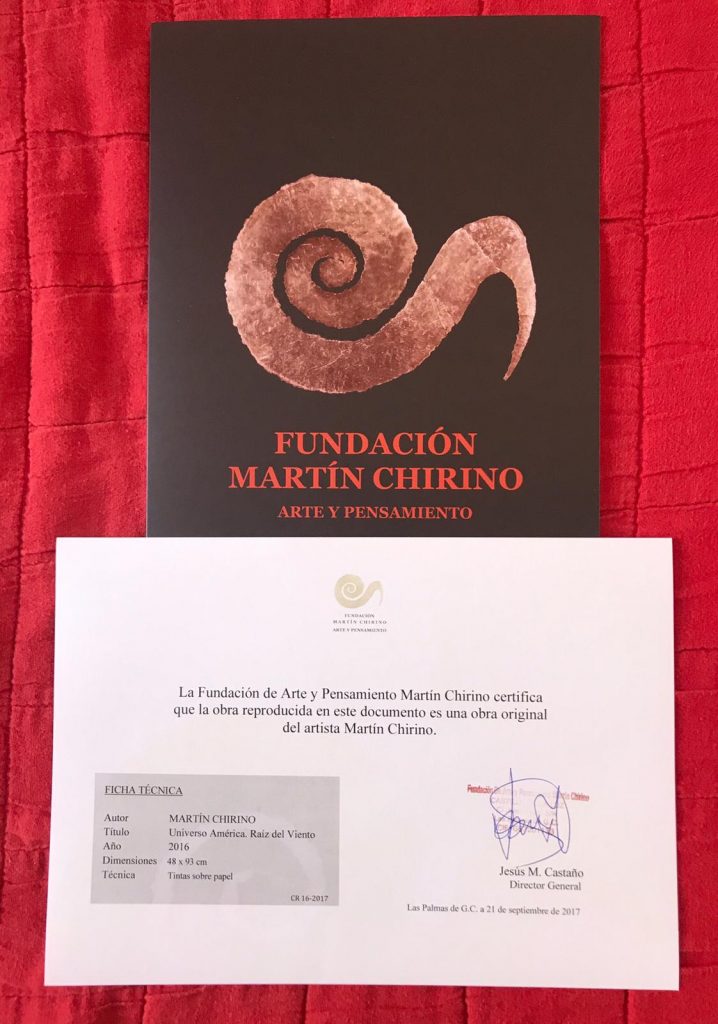

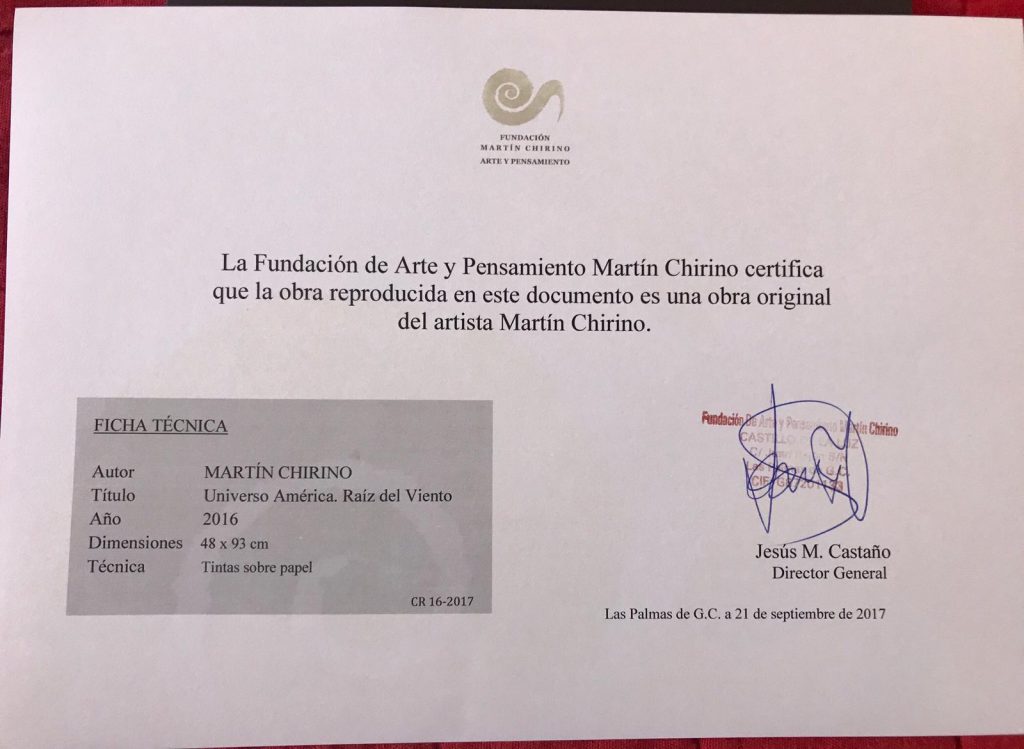
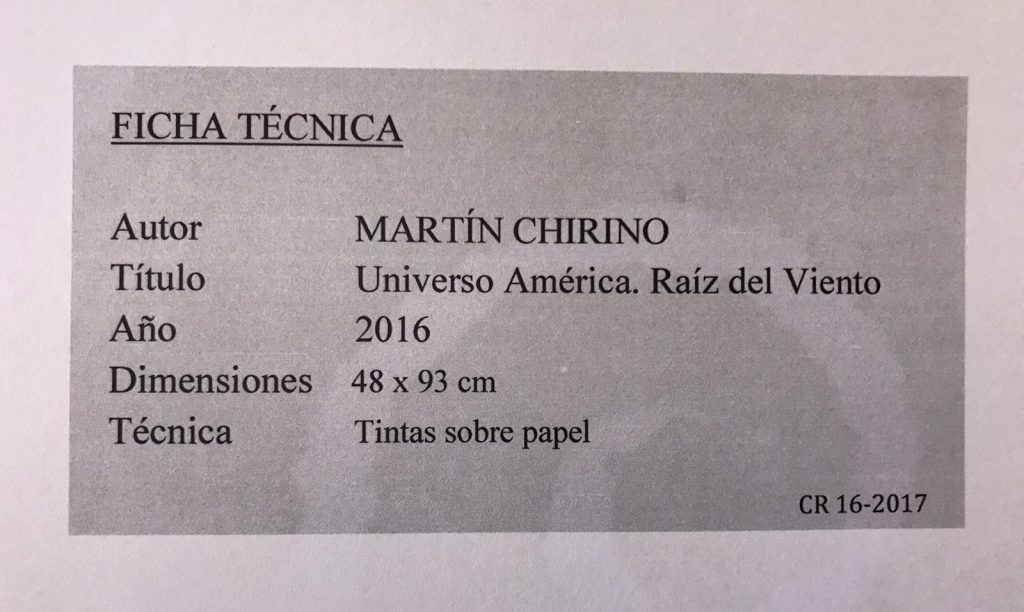

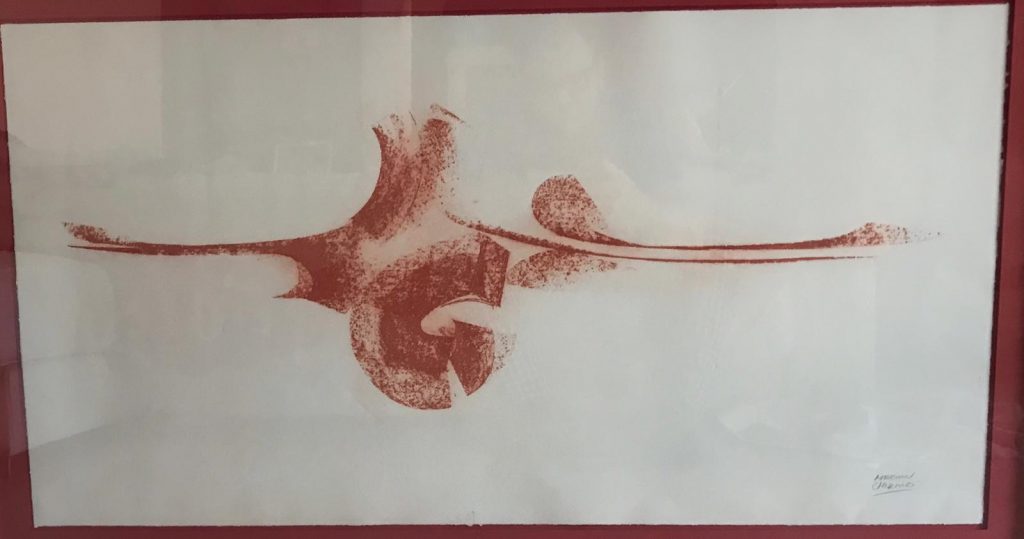
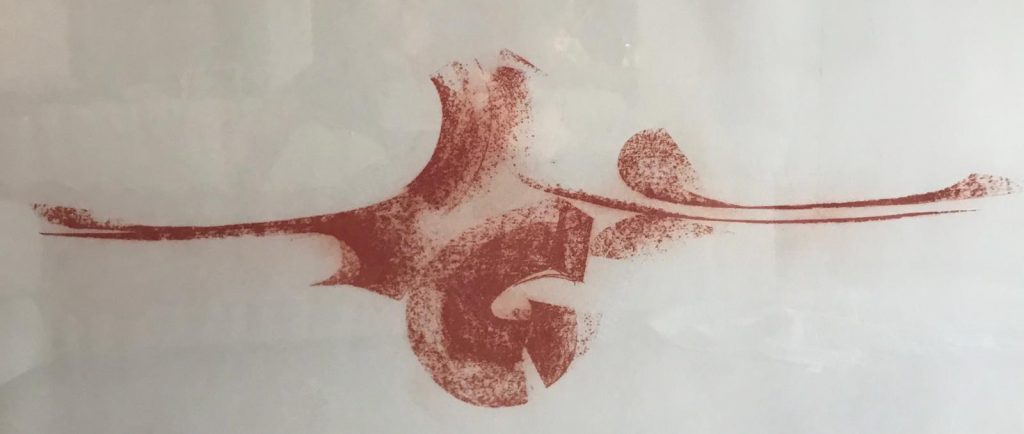
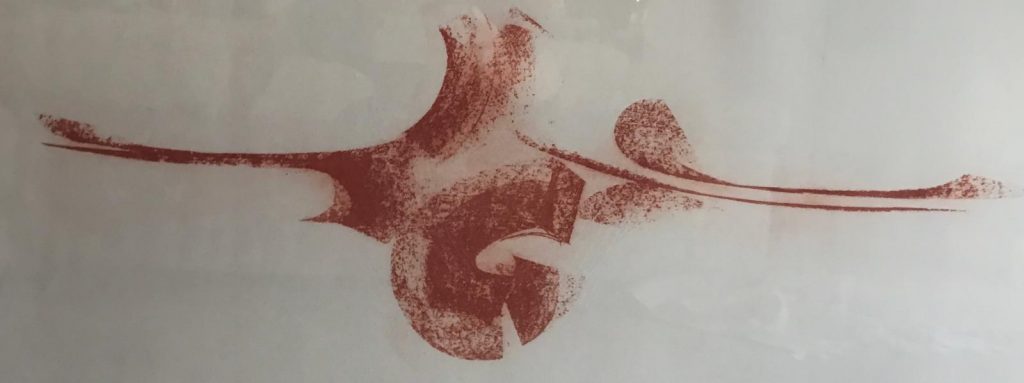
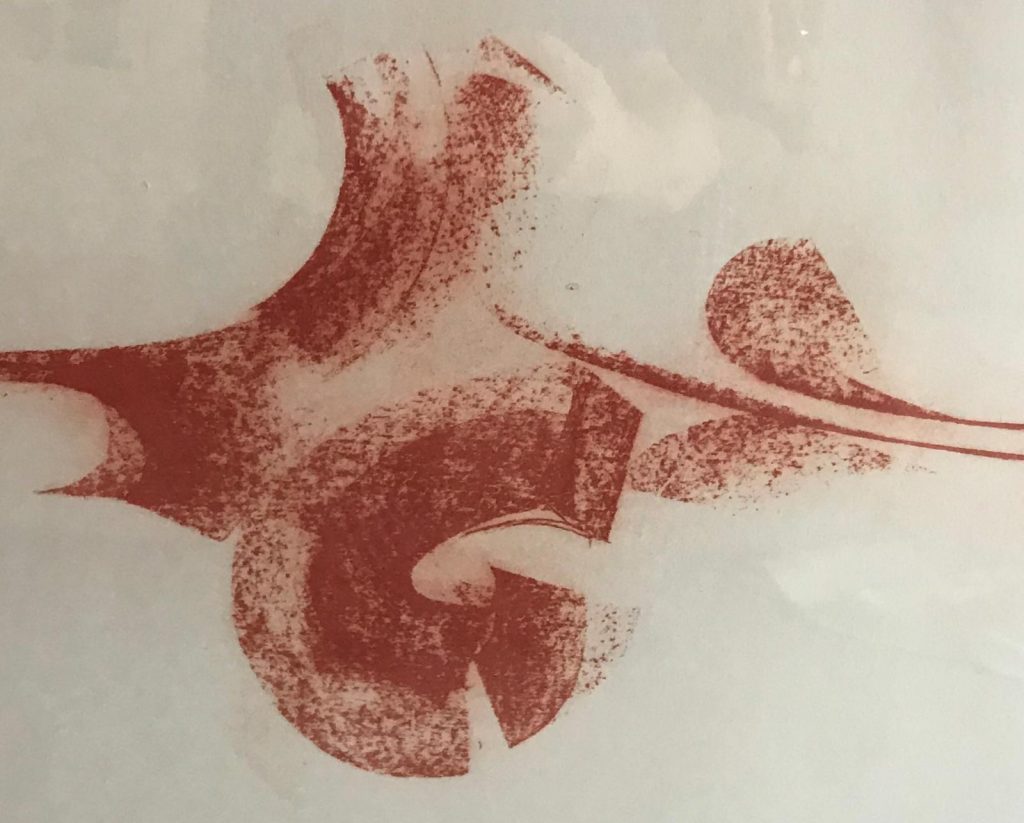
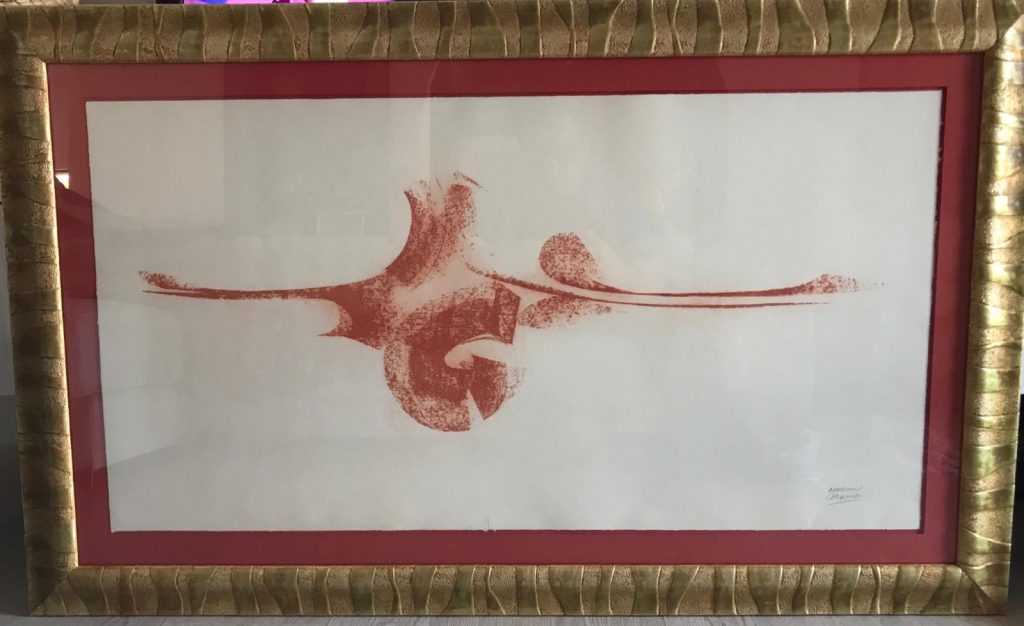
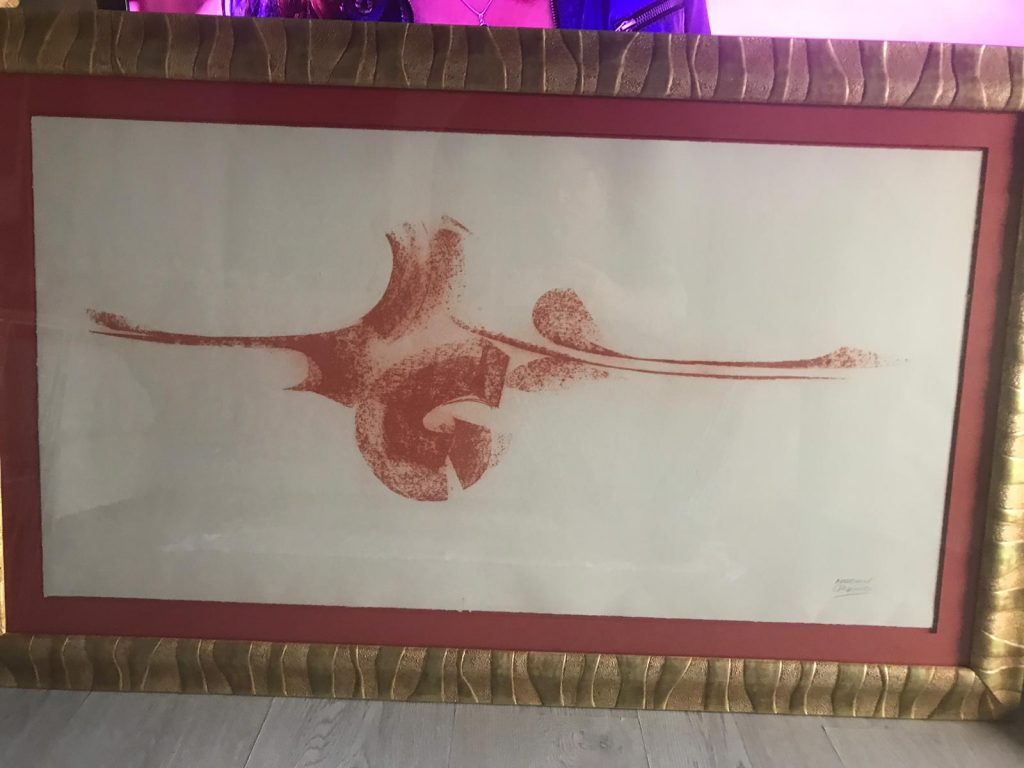


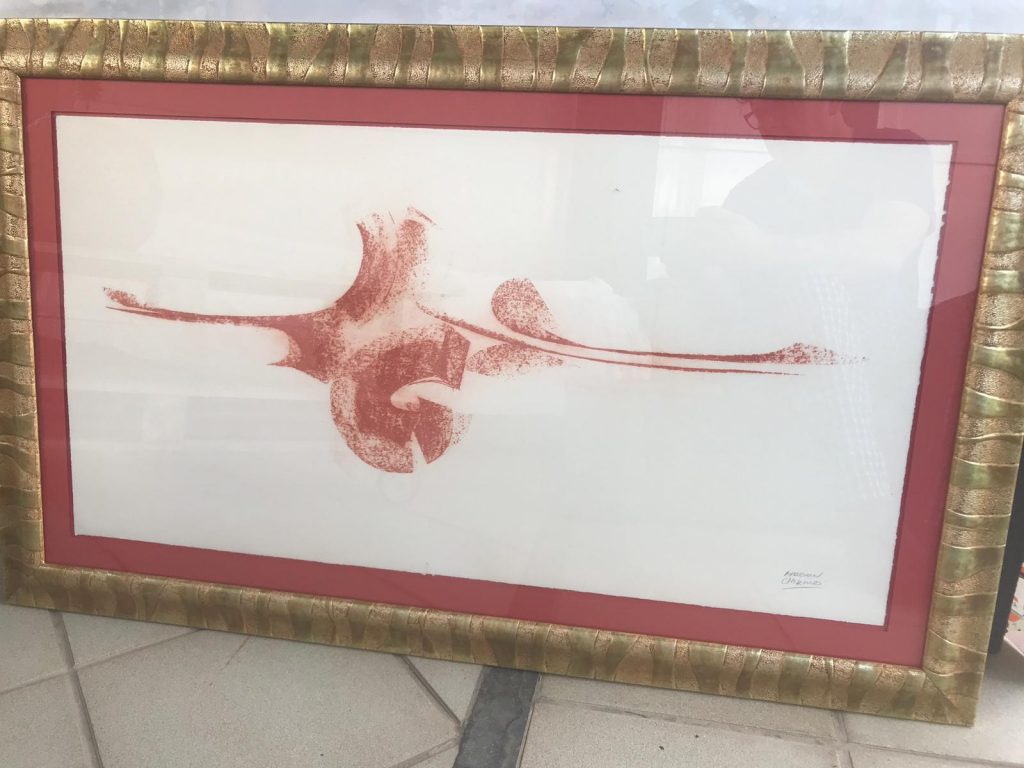

MARTIN CHIRINO, Universal Canary of Art.
The Martín Chirino Foundation sells one of his works. The information in this article has been taken from the Foundation.

The Castle of La Luz as the headquarters of the Martín Chirino Foundation opens to the visitor a combination of elements that come together in an integral cultural project.
On the one hand the Castle of La Luz, Good of Cultural Interest since 1941, as a Historical Monument preserves among its stones and in the organization of its spaces the memory of a time and a community disappeared in time. Since its rehabilitation, it also acquires a new museum dimension oriented to the conservation, research, documentation and dissemination of the history of the Canary Islands and its people.
On the other hand, the Martín Chirino Foundation, as a non-profit institution is presented as a meeting point for debate, exhibition, training and documentation related to the artistic and intellectual legacy of the artist.

Martín Chirino was born in Las Palmas de Gran Canaria in 1925, by the sea, in a family environment traditionally linked to the world of the shipyards of the Port of La Luz. This knowledge, from a very young age, enabled him to use the tool and introduced him to a world that filled him with amazement and passion for iron craftsmanship and wood carving. Circumstances that were decisive in the trajectory of the sculptor, since the two factors that best define his work are the continuous references to his land, whose ancestral culture exerted a powerful influence, and the use of wrought iron as a means of plastic expression, an artisan work of Spanish tradition, which, as Antonio Saura said, was able to synthesize with the most current spatial concerns.
At the age of 23 Chirino traveled to Madrid to study at the School of Fine Arts of San Fernando, after completing his studies he entered a period of research on iron and Spanish forge. In Italy he studied the classics, completing his training at the School of Fine Arts in London. After his return to the Canary Islands, he made the series «Reinas Negras» works influenced by African art and surrealism. Martín Chirino joined the group «El Paso» in 1958, along with Saura, Canogar, Feito, Millares, Rivera… From the News Spanish paintigs and sculpters exhibition at MOMA, Chirino’s presence in the U.S. will be frequent and periodic. Since the 1970s, monumental projects inspired by the wind spiral; he found in the legacy of the first settlers of his homeland, the Canary Islands, and continuing his research on African values, being currently a prestigious representative of Spanish abstract sculpture.

From 1983 to 1990 he served as president of the Círculo de Bellas Artes de Madrid, and from 1989 to 2002 he was director of the Centro Atlántico de Arte Moderno de Las Palmas de Gran Canaria. He has been awarded, among others, the International Sculpture Prize of the Budapest Biennial, the National Prize for Plastic Arts, the Canarias Prize for Plastic Arts, the Gold Medal for Fine Arts, the National Sculpture Award of the CEOE, the Medal of Honor of the Circle of Fine Arts of Madrid and the 2003 Prize of the Community of Madrid. In 2004 the Real Casa de la Moneda Foundation awarded him the Tomás Francisco Prieto Medal. For this reason, he has made for the National Mint and Timbre-Real Mint the medal entitled «Wind Spiral, Praise to Music». Prize of the Cristóbal Gabarrón Foundation of Plastic Arts (2008). Invested Doctor Honoris Causa by the University of Las Palmas de Gran Canarias (2008) and the Nebrija University of Madrid (2011). In 2014 he was appointed Honorary Scholar of the Royal Academy of Fine Arts of San Fernando in Madrid.
Martín Chirino starts from iron as the conductive metal of a work that seeks its maximum expressive potential with a minimum of matter. His sculptures, usually of large dimensions, respond to a double impulse: on the one hand, dialogue with primitive art and the materials and landscape native to the Canary Islands, read with the eyes of imaginative evocation and the memory of that teenage artist who dreamed of moving the horizon of his beach; on the other, a powerful simple impulse that generates all kinds of spatial geometries, usually curved (spirals), capable of illuminating the space that surrounds them and being at the same time, for those who contemplate them, enigma and revelation.
Martín Chirino died in Madrid on 11 March 2019.
The Martín Chirino Foundation sells one of his works:
Martin Chirino with frame/passepartout 120 x 70cm
